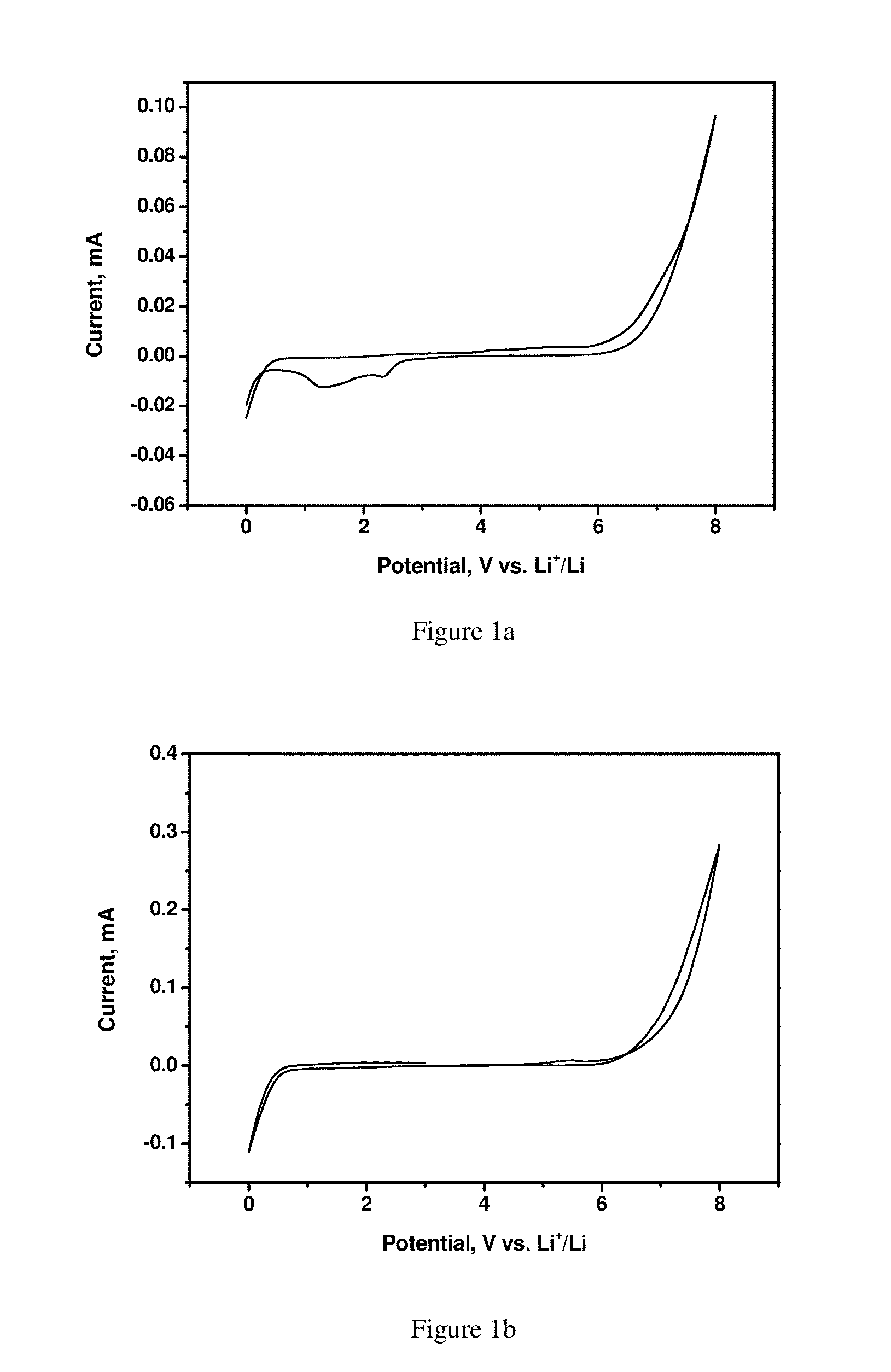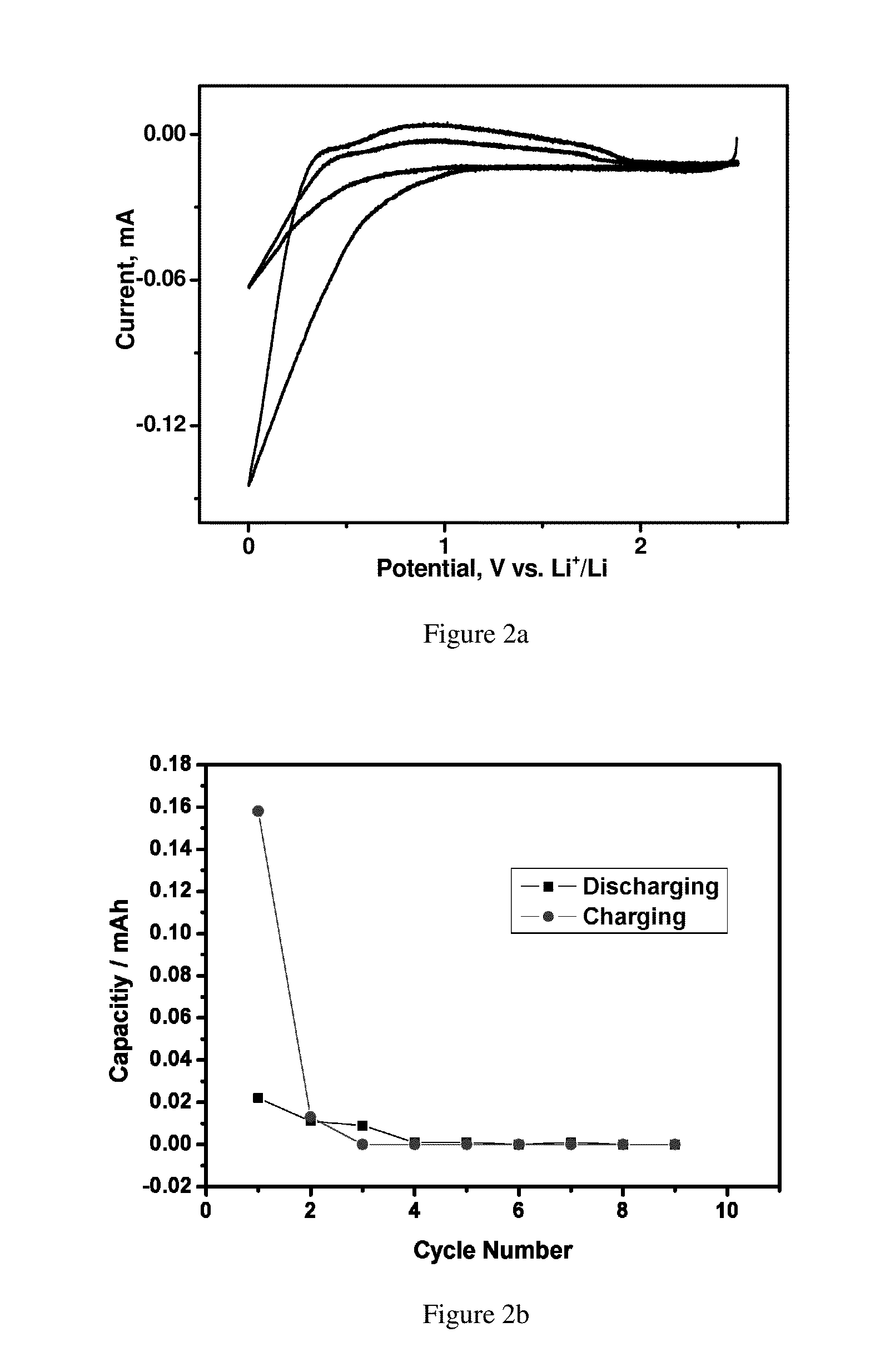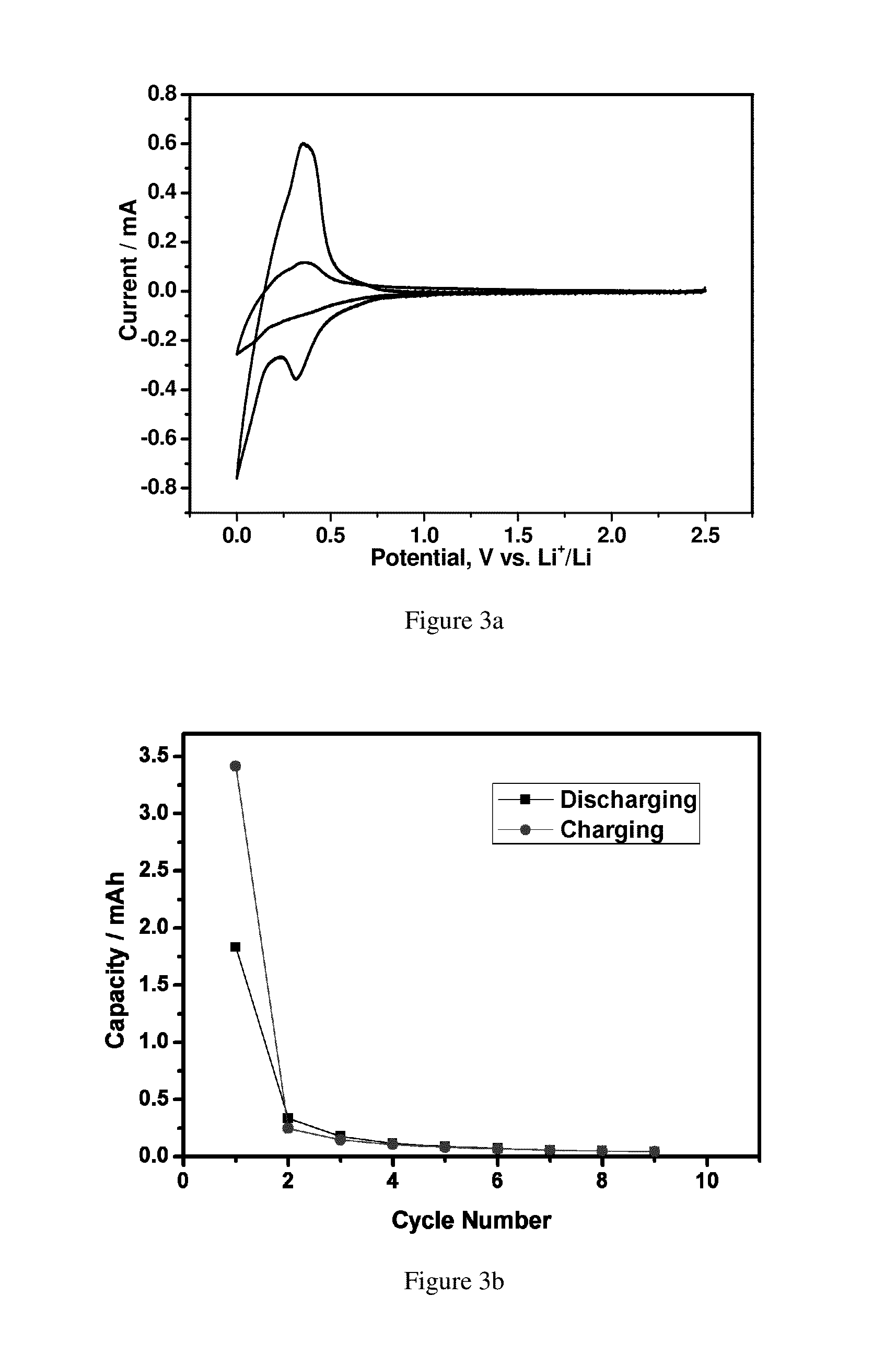High voltage electrolyte and lithium ion battery
a lithium ion battery and electrolyte technology, applied in the field of high voltage electrolyte and lithium ion batteries, can solve the problems of reducing the safety of lithium ion batteries and reducing the cycle li
- Summary
- Abstract
- Description
- Claims
- Application Information
AI Technical Summary
Benefits of technology
Problems solved by technology
Method used
Image
Examples
example 1
Cyclic Voltammetry Analysis of Electrolytes with Different Solvent Systems
[0060]The measurement was performed in a coin cell. A graphite electrode was used as the working electrode and lithium metal was used as both the counter electrode and the reference electrode. A separator was placed between the lithium metal electrode and the graphite electrode.
[0061]The working electrode tapes were fabricated at room temperature using MCMB (MesoCarbon MicroBeads) graphite powder as the active material, polyvinylidene difluoride (PVDF) resin, and conductive carbon black (SuperP) with 80:10:10 wt. % loading. Freestanding electrodes were dried at 90° C. in an oven before being transferred to a helium filled glove box with H2O and O2<1 ppm.
[0062]Stainless steel CR2032-type coin cells were used. The cell was comprised of a disk of the working electrode, glass fiber separators saturated with electrolyte, and Li foil. These cells were examined on an Arbin battery tester in the potentiodynamic (cycli...
example 2
Potentiodynamic Scans and Cycling Test (Half Cell) of Electrolytes with Different Additives
[0064]The measurement was performed in a coin cell. A graphite electrode was used as the working electrode and lithium metal was used as both the counter electrode and the reference electrode. A separator was placed between the lithium metal electrode and the graphite electrode.
[0065]The working electrode tapes were fabricated at room temperature using MCMB (MesoCarbon MicroBeads) graphite powder as the active material, polyvinylidene difluoride (PVDF) resin, and conductive carbon black (SuperP) with 80:10:10 wt. % loading. Freestanding electrodes were dried at 90° C. in an oven before being transferred to a helium filled glove box with H2O and O2<1 ppm.
[0066]Stainless steel CR2032-type coin cells were used. The cell was comprised of a disk of the working electrode, glass fiber separators saturated with electrolyte, and Li foil. These cells were examined on an Arbin battery tester in the poten...
example 3
Cycling of LiCoO2 vs. Graphite Lithium Ion Battery with the Dinitrile and Nitrile Electrolyte Solvent
[0069]The measurement was performed in a coin cell. Stainless steel CR2032-type coin cells were used. It was assembled with disks of both the positive and negative electrodes and glass fiber separators saturated with electrolyte. The LiCoO2 cathode was fabricated at room temperature using LiCoO2 powder as the active material, polyvinylidene difluoride (PVDF) resin, and conductive carbon black (SuperP) with 80:10:10 wt. % loading. The graphite anode was fabricated at room temperature using MCMB (MesoCarbon MicroBeads) graphite powder as the active material, polyvinylidene difluoride (PVDF) resin, and conductive carbon black (SuperP) with 80:10:10 wt. % loading. Freestanding electrodes were dried at 90° C. in an oven before being transferred to a helium filled glove box with H2O and O2<1 ppm.
[0070]In the actual battery performance test, different additive compounds were used to fabrica...
PUM
| Property | Measurement | Unit |
|---|---|---|
| voltage | aaaaa | aaaaa |
| charging voltage | aaaaa | aaaaa |
| charging voltages | aaaaa | aaaaa |
Abstract
Description
Claims
Application Information
 Login to View More
Login to View More - R&D
- Intellectual Property
- Life Sciences
- Materials
- Tech Scout
- Unparalleled Data Quality
- Higher Quality Content
- 60% Fewer Hallucinations
Browse by: Latest US Patents, China's latest patents, Technical Efficacy Thesaurus, Application Domain, Technology Topic, Popular Technical Reports.
© 2025 PatSnap. All rights reserved.Legal|Privacy policy|Modern Slavery Act Transparency Statement|Sitemap|About US| Contact US: help@patsnap.com



